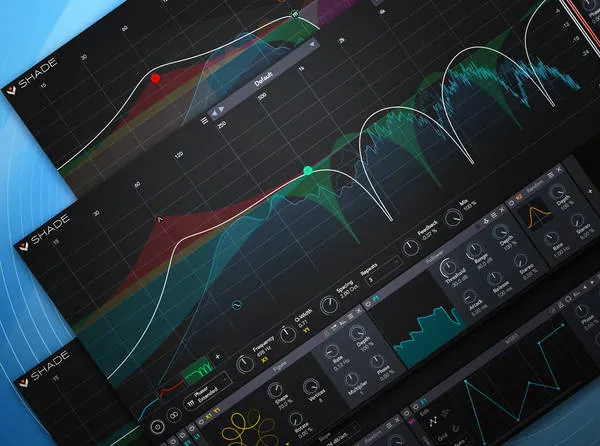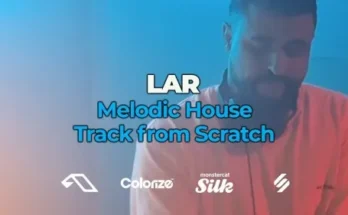UVI’s Shade plug-in takes the idea of filtering to infinity and beyond, with nearly limitless tone-shaping possibilities and control. In this UVI Shade video course, production whiz Eli Krantzberg walks you through the plug-in step-by-step, teaching you everything you need to know to start taking advantage of its sonic bounty right away. Learn about the 30+ filter types, the various modulators, and every other parameter nestled within this sound-sculpting behemoth with plenty of audio demonstrations along the way! These UVI Shade videos are for new Shade users.
Eli begins with a brief description of how Shade does what it does followed by a tour of the main interface and some basic usage scenarios, such as creating filter bands and/or modulators, routings, and more. This way, you’ll be able to start tweaking sounds right out of the gate. Then, it’s on to low pass filters, where you’ll hear the four different types available in Shade along with some basic modulation with the Figure modulator. Eli follows this by demonstrating the three different high pass filters and using the Envelope modulator on them.
Next up, you’ll explore the available notch and band pass filters on a keyboard part and hear they can add movement to the attack and tail of the sound by way of an envelope follower. The low/high shelf filters are covered next, including the special Q Up and Q Down parameters, which allow simultaneous resonant dips and boosts at various cutoff points.
There’s much more to come, including peak filters (two types), LFO modulator, phasers, comb and flanging, volume gate (using the MSEG modulator), Envelope/Xpander/Tilt filters, De-Esser and Dynamic EQ (creating your own with the Follower modulator and macro module), telephone effect, pitch tracking (creating your own smart EQ), and much more!
There’s a whole universe to explore with Shade, which can be a bit intimidating at first. With this Shade course, you’ll learn all you need to know in a systematic fashion that’ll have you taking full advantage of its potential quickly while having a lot of fun. Check out the individual UVI Shade video tutorial descriptions for more information and ideas on how you can implement it in your own tracks. Learn new ways to mangle, massage, and mutate your sounds… watch “UVI Shade Explained®” now!
What You Will Learn
Content
01. How Does Shade Work? (7:26)
Learn the basics of navigating Shade’s modular style interface, how to create filter bands, modulators, create modulation routings, and more.
02. Low Pass Filters (5:38)
Explore the sonic characteristics of the four different low pass filter types along with some simple modulation using the Figure modulator.
03. High Pass Filters (1:49)
Hear the sonic variations between the three different types of high pass filters and how they sound when modulated with the Envelope modulator.
04. Notch & Band Pass Filters (4:49)
These two filter types are put to work on a keyboard part along with an envelope follower for modulation to add movement to the attack and the audio tail.
05. Low & High Shelf Filters (4:32)
Discover the unique Q Up and Q Down parameters on the low and high shelf EQs for simultaneous resonant boosts and dips at unique cutoff points on both ends of the frequency spectrum.
06. Peak Filters & LFO Modulator (6:08)
The two peak filter parameters and LFO modulator are explored as movement is added to a synth pad sound.
07. Phasers (5:04)
Discover the rich and varied sonic palette of phaser types Shade offers, enhanced by some slow-moving frequency modulation.
08. Comb & Flanging Filters (7:34)
Explore the deep filtering control the various comb/flanger filters provide and hear it applied with different settings to left and right channels for complex movement.
09. Volume Gate (9:08)
Learn all about the MSEG modulator and see how it’s used in conjunction with the Gain filter type to create a rhythmic volume gate. The same multi-step envelope is then used to modulate the pitch of a resonant low pass filter to add more interest and movement to the effect.
10. Envelope, Xpander, & Tilt Filters (4:54)
Hear how the multimode Xpander filter is used in conjunction with the Envelope modulator to create interesting contours to a synth bass sound. Also hear how the Tilt band sounds when modulated with an envelope.
11. DeEsser & Dynamic EQ (5:06)
Discover how to create your own custom De-Esser and multi-band dynamic EQs using the Follower modulator and Macro module to control parameters across several bands simultaneously.
12. Telephone Effect (2:03)
See how to use Shade’s steep slopes to advantage in creating a narrow passthrough area in the frequency spectrum. You can then easily assign a single macro knob to all the frequency values in one step in order to sweep all the bands simultaneously.
13. Figure, Follow, Spread, & SideChain (7:01)
Explore some creative combinations of modulators incorporating sidechaining the Follower module, spreading and modulating left/right and mid/side signals independently, and more!
14. Pitch Tracking: Roll Your Own Smart EQ (8:23)
See how the pitch tracking modulator is used to create smart EQ and de-essing bands that track incoming pitch. Also, hear some creative uses with it as a secondary modulation, along with the Random modulator.
15. X/Y Modulator (2:57)
Discover a stimulating and fun way of controlling and automating multiple parameters simultaneously using Shade’s X/Y Pad.




